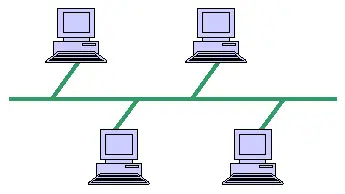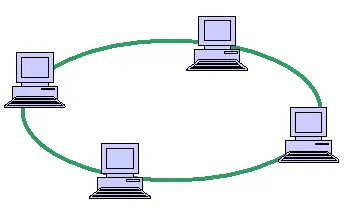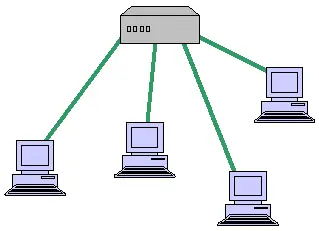







 |
|
| Topologies | |
| Area Network Intro | |
| Bandwidth & Latency | |
| Network Design Rule | |
| Sym. vs Asymmetric | |
 |
|
| Zen hardware | |
| Hardware Resources | |
| Braindumps | |
| MCSE Braindumps | |
| Certification Exams | |
| Braindump | |
| Exam Certification | |
| Free Classified ads of United Kingdom | |
| video chat rooms | |
| Mobile Phone deals | |
| Insurance Information Centre | |
| Network Security | |
| Create a free website | |
| online restaurant take out | |
| SEO tips and tricks | |
| web design | |
| Bond Market | |
| BNetwork LAN messenger | |
| Virtual office Los Angeles | |
| Yahoo invisible detector | |
| Seo expert | |
|
||||||
|
In networking, the term topology refers to the layout of connected devices on a network. This article introduces the standard topologies of computer networking. Topology in Network DesignOne can think of a topology as a network's "shape" ... (see below) This shape does not necessarily correspond to the actual physical layout of the devices on the network. For example, the computers on a home LAN may be arranged in a circle, but it would be highly unlikely to find an actual ring topology there. Network topologies are categorized into the following basic types:
More complex networks can be built as hybrids of two or more of the above basic topologies.
BusBus networks (not to be confused with the system bus of a computer) use a common backbone to connect all devices. A single cable, the backbone functions as a shared communication medium, that devices attach or tap into with an interface connector . A device wanting to communicate with another device on the network sends a broadcast message onto the wire that all other devices see, but only the intended recipient actually accepts and processes the message. Ethernet bus topologies are relatively easy to install and don't require much cabling compared to the alternatives. 10Base-2 ("ThinNet") and 10Base-5 ("ThickNet") both were popular Ethernet cabling options years ago. However, bus networks work best with a limited number of devices. If more than a few dozen computers are added to a bus, performance problems will likely result. In addition, if the backbone cable fails, the entire network effectively becomes unusable.
RingIn a ring network, every device has exactly two neighbors for communication purposes. All messages travel through a ring in the same direction (effectively either "clockwise" or "counterclockwise"). A failure in any cable or device breaks the loop and can take down the entire network. To implement a ring network, one typically uses FDDI, SONET , or Token Ring technology. Rings are found in some office buildings or school campuses. StarMany home networks use the star topology. A star network features a central connection point called a "hub" that may be an actual hub or a switch . Devices typically connect to the hub with Unshielded Twisted Pair (UTP) Ethernet.
Compared to the bus topology, a star network generally requires more cable, but a failure in any star network cable will only take down one computer's network access and not the entire LAN. (If the hub fails, however, the entire network also fails.) TreeTree topologies integrate multiple star topologies together onto a bus. In its simplest form, only hub devices connect directly to the tree bus, and each hub functions as the "root" of a tree of devices. This bus/star hybrid approach supports future expandability of the network much better than a bus (limited in the number of devices due to the broadcast traffic it generates) or a star (limited by the number of hub ports ) alone. Remote Infrastructure Management-IT Outsourcing MeshMesh topologies involve the concept of routes . Unlike each of the previous topologies, messages sent on a mesh network can take any of several possible paths from source to destination. (Recall that in a ring, although two cable paths exist, messages can only travel in one direction.) Some WANs, like the Internet, employ mesh routing. Online Website Builder ConclusionTopologies remain an important part of network design theory. You can probably build a home or small business network without understanding the difference between a bus design and a star design, but understanding the concepts behind these gives you a deeper understanding of important elements like hubs, broadcasts, ports, and routes. |
 What is Computer Networking?
What is Computer Networking?

